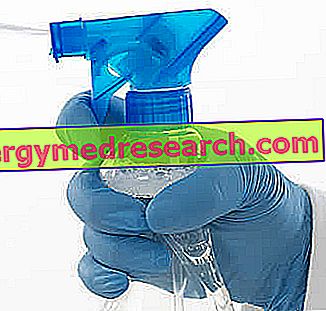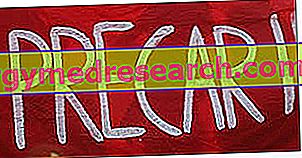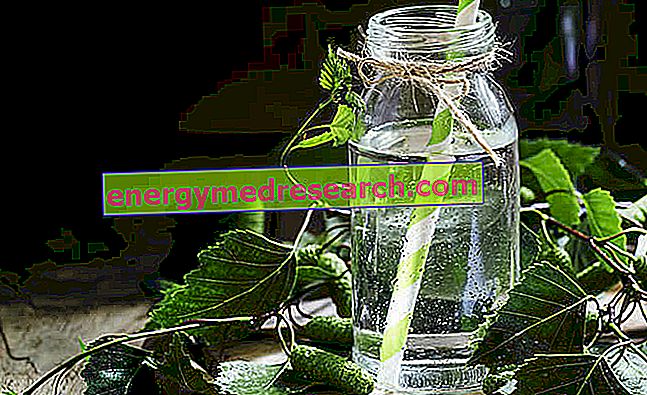Definition
Disinfectants are a group of substances belonging to the group of anti-infective agents and used for the disinfection of environments, surfaces and objects of various kinds.

Of course, the purpose of disinfection is to reduce or eliminate - depending on the needs - the microbial load present in the environment or on the objects that must be used.
However, it must be remembered that disinfection can be achieved not only through the use of disinfectants of a chemical nature, but also through physical means, such as, for example, heat and high energy ultraviolet or electromagnetic radiation. Generally, these methods are used to disinfect materials on which chemical disinfectants do not produce optimal results, or where there is an incompatibility between the material to be disinfected and the disinfectant itself.
Choice of Disinfectant
The choice of the disinfectant to be used may depend on several factors, such as:
- The type of object, environment or surface to be disinfected;
- The final use of what must be disinfected (it is clear, in fact, that the disinfection of an operating room will require different criteria and types of disinfectants than the disinfection of a domestic environment);
- The degree of disinfection to be achieved.
With regard to this last point, it should be remembered that there are different levels of disinfection, which can be summarized as follows:
- Disinfection of medium-low level, consisting in the elimination of most of the micro-organisms present on the surface or in the environment that we intend to disinfect;
- High level disinfection, consisting in the elimination of all pathogenic microorganisms from the object or environment in question;
- Sterilization, consisting in the elimination of all present, pathogenic and non-pathogenic micro-organisms, including spores.
Types of Disinfectants
There are numerous types of disinfectants, which can be used to obtain different degrees of disinfection, depending on the needs.
The various types of disinfectants can be classified according to their chemical structure, or according to the use made of them. For example, according to this last classification criterion, disinfectants could be divided into disinfectants for environments and disinfectants for surfaces, instruments, equipment, etc.
However, without going too far into classification methods, the main disinfectants currently used will be briefly described below.
Halogenated compounds
Among the disinfectants containing halogens in their chemical structure, certainly the best known are hypochlorites and, in particular, sodium hypochlorite (commonly known as " bleach ").
Hypochlorites are inorganic compounds used mainly for the disinfection of environments. They have a wide spectrum of action and a rapid onset of action; therefore, they are very useful in daily disinfection operations. Usually, they are used in concentrations greater than or equal to 1, 000 ppm (parts per million).
Sodium dichloroisocyanurate, an organic compound widely used as a disinfectant in swimming pool water, also belongs to this category of disinfectants.
Chlorine compounds allow obtaining a medium-high degree of disinfection and are also endowed with a mild sporicidal action. They express their activity substantially through the oxidation of microorganism proteins.
alcohols
Ethyl alcohol and propyl alcohol belong to this group of disinfectants. These compounds are also used as antiseptic agents, therefore for skin disinfection (not injured). However, their use can also be extended to the disinfection of surfaces, environments and - where possible - of instruments (non-surgical).
Generally, alcohols are used in concentrations that can vary between 60% and 70-75%. The level of disinfection obtained is medium-low and does not have sporicidal activity. Their disinfectant action is expressed through the proteinic denaturation of pathogenic microorganisms.
Aldehydes
Among the disinfectants belonging to this group we find the glutaral aldehyde (or glutaraldehyde ) and the ortho-phthalaldehyde .
The aldehyde disinfectants are used above all in the medical and surgical field, and allow obtaining a high level of disinfection. They are mostly used to disinfect instruments, but they must be handled with care and only by expert personnel, since they are toxic if ingested or inhaled and irritating to skin and mucous membranes.
Glutaraldehyde is generally used in concentrations of 2% and has a broad spectrum of action, although its activity towards spores and mycobacteria is rather slow; therefore, it may take a long time to disinfect.
The ortho-phthalaldehyde, on the other hand, has no activity on the spores, while it is able to kill microorganisms (including mycobacteria) at room temperature and in a relatively short time. Usually, it is used in concentrations of 0.55%.
Heterocyclic compounds
Among the disinfectants with a heterocyclic structure, the most widely used and most known is certainly ethylene oxide . This organic compound is widely used in the surgical, pharmaceutical (for the sterilization of instruments, containers or thermolabile pharmaceutical preparations, in which heat sterilization is not possible) and food.
With the use of ethylene oxide it is possible to obtain a real sterilization; not surprisingly, it has bactericidal, fungicidal, virucidal and sporicidal activity. At room temperature, ethylene oxide appears as a colorless highly flammable gas.
Given its characteristics - similarly to what happens for disinfectants with aldehyde chemical structure - ethylene oxide must be handled with great care and caution, and only by expert personnel, since it is toxic and potentially explosive.



